I’ll cut to the chase: if you’re tired of tap water that tastes like it’s been sitting in a rusty pipe, you need a Waterdrop water filter. I’ve been using one for months, and it’s transformed my daily hydration game.
This isn’t just about clean water—it’s about water that tastes crisp, feels safe, and makes you wonder why you ever settled for less. From its sleek design to its powerful filtration, Waterdrop delivers.
In this article, I’ll share my experience, break down the pros and cons, compare it to other brands, and give you maintenance tips to keep it running smoothly.
My Journey With The Waterdrop Water Filter
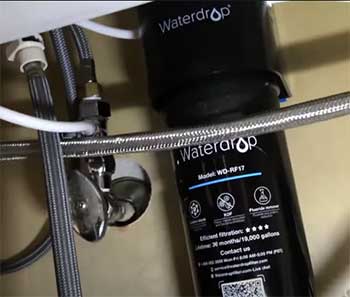
Let me take you back to when I first decided to upgrade my water game.
I live in a city with tap water that’s safe but tastes like it’s been through a chemistry lab.
I’d been using a basic pitcher filter, but it was slow, clunky, and didn’t do much for the metallic aftertaste.
I wanted something better—something that could handle the heavy lifting without turning my kitchen into a science experiment.
That’s when I stumbled across Waterdrop, specifically their G3P800 under-sink reverse osmosis system.
It promised to tackle over 1,000 contaminants, deliver fast-flowing water, and fit neatly under my sink. I was skeptical but intrigued.
Installing the Waterdrop G3P800 was my first test. I’m no plumber, but the instructions were clear, and the kit came with everything I needed. It took me about 45 minutes, with a few choice words when I fumbled the tubing. Once it was up and running, I filled a glass and took a sip.
The difference was night and day. The water was clean, crisp, and free of that weird taste I’d grown used to. My coffee tasted better, my cooking improved, and I started drinking more water just because it was so refreshing.
The smart faucet, with its LED display showing water quality and filter life, felt like a little gift from the future. I was hooked, but I wanted to understand what made this system tick and how it stacked up against others.
What Makes Waterdrop Stand Out?
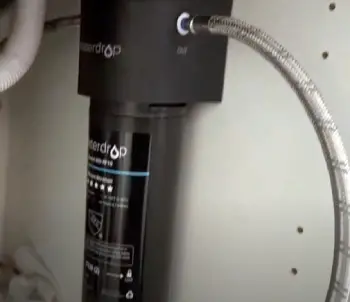
Waterdrop isn’t just another water filter brand—it’s a company that’s been shaking things up since 2015.
Their focus is on combining cutting-edge technology with user-friendly designs.
The G3P800, for instance, uses an eight-stage filtration process, including reverse osmosis and UV sterilization, to strip out everything from lead to bacteria.
What caught my attention was their commitment to efficiency.
Unlike older reverse osmosis systems that waste gallons of water, this one has a 3:1 pure-to-waste ratio, meaning you get three gallons of clean water for every gallon wasted. That’s a big deal for both your wallet and the environment.
The system’s tankless design also means it doesn’t hog space under your sink. At just 5.65 inches wide, it’s compact enough to leave room for your cleaning supplies.
The smart faucet is another standout—it shows real-time data on total dissolved solids (TDS) and filter life, so you’re never guessing when it’s time for a replacement. I’ve found this feature incredibly reassuring, especially when I’m serving water to my family.
But it’s not just about the tech; Waterdrop’s customer service has been responsive when I’ve reached out with questions, and their products carry certifications from NSF and other trusted bodies, giving me confidence in their claims.
The Pros of Choosing Waterdrop
- Unmatched Filtration Power
Let’s talk about what matters most: clean water. The Waterdrop G3P800 is a beast when it comes to filtration. Its eight-stage process tackles over 1,000 contaminants, including heavy metals like lead, arsenic, and chromium, as well as PFAS, fluoride, and even bacteria.
I tested my water before and after installation, and the TDS dropped from 220 to under 30—a clear sign it’s doing its job. The UV purifier adds an extra layer of protection by zapping germs, which is a godsend if you’re worried about microbial nasties. This system doesn’t just filter; it gives you water you can trust.
- Space-Saving and Sleek Design
I love that Waterdrop prioritizes aesthetics and practicality. The G3P800’s tankless design is a game-changer for small kitchens like mine. Traditional reverse osmosis systems come with bulky tanks that eat up space, but this one fits neatly under the sink.
The smart faucet looks modern and doesn’t clash with my kitchen’s vibe. Plus, it’s made of lead-free materials, so I don’t have to worry about new contaminants sneaking in. The compact size and clean lines make it feel like a premium product that’s worth the investment.
- Efficiency That Saves Water and Money
Reverse osmosis systems get a bad rap for wasting water, but Waterdrop flips the script. The 3:1 pure-to-waste ratio means you’re not flushing gallons down the drain for every glass you drink. In my house, where we go through a lot of water for cooking and drinking, this efficiency adds up.
The system’s high flow rate—up to 800 gallons per day—means I can fill a pitcher in seconds without waiting. The long filter life (up to two years for the RO membrane) also keeps maintenance costs down, which is a relief for my budget.
- User-Friendly Features
The smart faucet is one of my favorite parts. It’s like having a water quality dashboard right at my sink. The LED display shows TDS levels and alerts me when filters need replacing, so I’m never left wondering. Installation was straightforward, even for someone like me who’s not exactly handy.
The system comes with a detailed manual and a YouTube guide that walked me through every step. Filter changes are a breeze, too—just a quick twist with the included wrench, and you’re done in minutes. It’s clear Waterdrop designed this with real users in mind.
The Cons of Waterdrop Water Filters
- Higher Upfront Cost

Let’s be real: the Waterdrop G3P800 isn’t cheap. The initial price tag, around $1,000, made me hesitate before buying.
Compared to simpler pitcher filters or even some under-sink systems, it’s a significant investment.
I had to weigh whether the advanced filtration and features were worth it for my family.
While the long filter life and water savings offset the cost over time, it’s still a hurdle for budget-conscious buyers. If you’re looking for a basic filter to remove chlorine, you might find cheaper options that get the job done.
- Installation Challenges for Some
While I managed to install the system myself, it wasn’t without a few hiccups. You need an electrical outlet nearby for the UV purifier and pump, which could be an issue if your under-sink setup isn’t wired.
The dedicated faucet also requires drilling a hole in your countertop, which might intimidate renters or those with custom sinks. I had a minor leak during installation because I didn’t tighten the tubing enough, but a quick call to customer service sorted it out.
If you’re not comfortable with DIY, you might need to hire a plumber, adding to the cost.
- Not Ideal for Well Water
If you’re on well water, Waterdrop might not be your best bet. The G3P800 is designed for municipal water supplies and can clog if your water has high sediment or large particulates. I’m on city water, so this wasn’t an issue for me, but friends with wells have had to look elsewhere or add a pre-filter.
It’s a limitation that’s worth noting if your water source isn’t treated. Waterdrop does offer solutions for specific needs, but you’ll need to check if they match your situation.
- Wastewater Still Exists
Even with its impressive 3:1 ratio, the G3P800 still produces wastewater. For every three gallons of clean water, one gallon goes down the drain. While this is better than the 1:1 or 2:1 ratios of older systems, it’s still a downside if you’re hyper-focused on conservation.
I’ve gotten used to it, but it nagged at me initially, especially when I thought about the environmental impact. If you’re in a drought-prone area, this might give you pause, though the system’s efficiency is a step in the right direction.
Comparing Waterdrop To Other Brands
- Hydroviv Water Filter
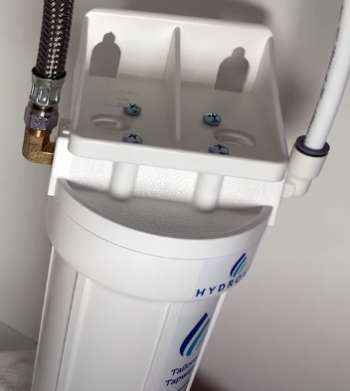
Hydroviv takes a unique approach by customizing its filters based on your local water quality.
You enter your zip code, and their team tailors the filter to tackle contaminants specific to your area, like lead, arsenic, or PFAS.
I was intrigued by this personalized touch, as it feels like a bespoke solution.
Hydroviv’s under-sink system is IAPMO-certified to NSF/ANSI standards 42 and 53, meaning it handles aesthetic issues like taste and serious health risks like heavy metals.
It’s also a breeze to install—no drilling required since it connects to your existing faucet.
However, it lacks reverse osmosis, so it doesn’t remove fluoride or nitrates, which was a dealbreaker for me. The filter life is shorter, around six months or 720 gallons, and replacements are pricey at $75-$100 each. While Hydroviv’s customization is impressive, I found Waterdrop’s broader contaminant removal and longer filter life more practical for my needs.
- BOROUX Water Filter
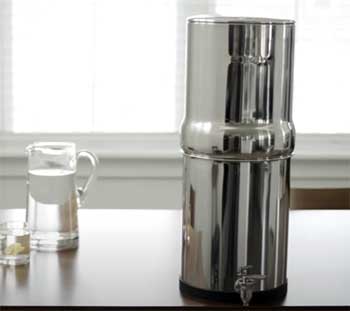
BOROUX’s Legacy system is a countertop gravity-fed filter, a departure from Waterdrop’s under-sink setup.
It’s made of durable stainless steel and uses Foundation Filters certified to NSF/ANSI/CAN standards, removing up to 99.97% of contaminants like lead, PFAS, and pesticides.
I liked the idea of a system that doesn’t need plumbing or electricity, making it portable and renter-friendly.
The filters last an impressive 6,000 gallons, which is years of use for most households. However, BOROUX doesn’t tackle microbes or bacteria, so it’s not ideal if your water has biological risks.
The gravity-fed design also means slower filtration—fine for small batches but frustrating if you need a lot of water fast. Compared to Waterdrop’s high-tech, fast-flowing system, BOROUX feels more basic, though its long filter life and sustainability are hard to beat for countertop users.
- IcePure Water Filter
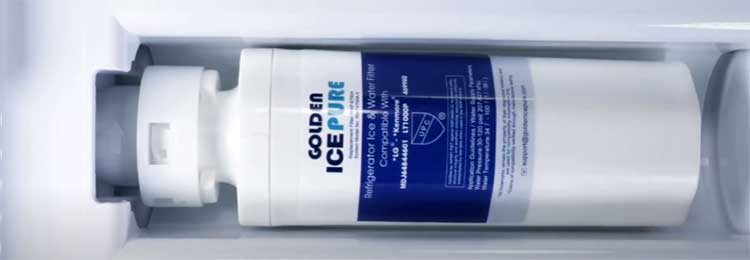
IcePure offers both pitcher and gravity-fed systems at a budget-friendly price, appealing if you’re not ready to splurge on Waterdrop. Their filters are certified to NSF/ANSI 42 and 53, handling chlorine, lead, and sediments well, but they fall short on PFAS and pesticides.
I tried an IcePure pitcher briefly, and while it was convenient, the 40-gallon filter life meant frequent replacements, which got old fast. Their gravity-fed systems last longer, around 2,000 gallons, but the construction feels flimsier than BOROUX, with occasional spigot leaks.
IcePure is great for basic needs and small spaces, but Waterdrop’s advanced filtration, higher capacity (800 gallons per day), and smart features make it a clear winner for those wanting a comprehensive, long-term solution.
Maintenance Tips For Your Waterdrop Water Filter
- Regular Filter Replacement
Keeping your Waterdrop system in top shape starts with timely filter changes. The G3P800 has three main filters: the front compound filter (6 months or 550 gallons), the RO membrane (24 months or 2,200 gallons), and the rear carbon rod filter (12 months or 1,100 gallons).
I set calendar reminders based on the smart faucet’s filter life indicator to stay on track. Replacing them is simple—turn off the water supply, twist off the old filter with the provided wrench, and pop in the new one.
It takes about five minutes, and I always keep a towel handy to catch any drips. Don’t skip this step; old filters can clog and reduce performance.
- Cleaning the System
Your Waterdrop system doesn’t need much cleaning, but a little TLC goes a long way. I wipe down the exterior and faucet with a damp cloth every couple of months to keep it free of dust or grime. The lead-free faucet is easy to maintain, but avoid harsh chemicals that could damage it.
If you notice scale buildup (common in hard water areas), a mild vinegar solution can help. I also flush the system after long periods of inactivity, like a vacation, by running water for a few minutes. This keeps the filters fresh and ensures the water tastes great.
- Monitoring Water Quality
The smart faucet’s TDS display is your best friend for tracking water quality. I check it weekly to make sure the TDS stays low (under 50 is ideal for me). If you notice a sudden spike, it might mean a filter needs replacing or there’s an issue with the system.
I had a TDS jump once after a filter change, and a quick call to Waterdrop’s support team helped me troubleshoot—it was just a loose connection. Regularly monitoring the display gives you peace of mind and catches problems early.
- Avoiding Clogs and Leaks
To prevent clogs, especially if your water has high sediment, consider adding a pre-filter if you’re in a high-risk area. I learned this the hard way when a friend with well water had issues. For leaks, double-check all connections during installation and tighten them securely.
I keep an eye on the tubing under the sink every few months to ensure nothing’s loose. If you’re not using the system for a while, shut off the water supply to avoid pressure buildup. These small steps keep your Waterdrop running smoothly for years.
Frequently Asked Questions (FAQ)
I’d say Waterdrop is a fantastic choice if you’re serious about water quality. Their systems, like the G3P800, are NSF-certified and tackle over 1,000 contaminants with advanced reverse osmosis and UV technology. The sleek design, high flow rate, and smart features make it a standout. Customer service has been responsive in my experience, and their focus on sustainability, like the Water4Smile program, adds to their appeal. If you want reliable, high-performance filtration, Waterdrop delivers.
Comparing Waterdrop to Brita is like comparing a sports car to a bicycle. Brita’s pitchers are affordable and great for basic chlorine and sediment removal, but they can’t touch Waterdrop’s ability to remove heavy metals, PFAS, and bacteria. Brita’s filters also need frequent replacements, and the flow rate is sluggish. Waterdrop’s under-sink systems, with their long filter life and high capacity, are better for households needing robust filtration. If you’re after convenience on a budget, Brita’s fine; for comprehensive purification, Waterdrop wins.
Waterdrop was founded in 2015 and is headquartered in China, but it operates globally with a strong presence in the U.S. and other markets. Their products are designed with international standards in mind, carrying certifications from NSF, WQA, and others. I’ve found their quality and customer support to be top-notch, regardless of where they’re based. If you’re concerned about origin, rest assured their focus on rigorous testing and transparency holds up.
Waterdrop’s reverse osmosis systems, like the G3P800, do remove most minerals, including beneficial ones like calcium and magnesium, to achieve thorough purification. However, the system includes a remineralization filter that adds back healthy minerals to improve taste and health benefits. I’ve noticed the water tastes crisp but not flat, thanks to this feature. If retaining minerals is a priority, Waterdrop’s design ensures you’re not left with completely stripped water.
Why Waterdrop Is Worth Your Investment?
I can’t recommend the Waterdrop water filter enough. It’s transformed how I think about tap water, delivering clean, great-tasting water that makes every sip a pleasure. The advanced filtration, smart features, and efficient design make it a standout choice. Despite the higher upfront cost, the long-term savings and peace of mind are worth it.
If you’re ready to upgrade your water quality and enjoy a hassle-free filtration experience, Waterdrop is the way to go. Trust me—you’ll wonder why you didn’t make the switch sooner.
